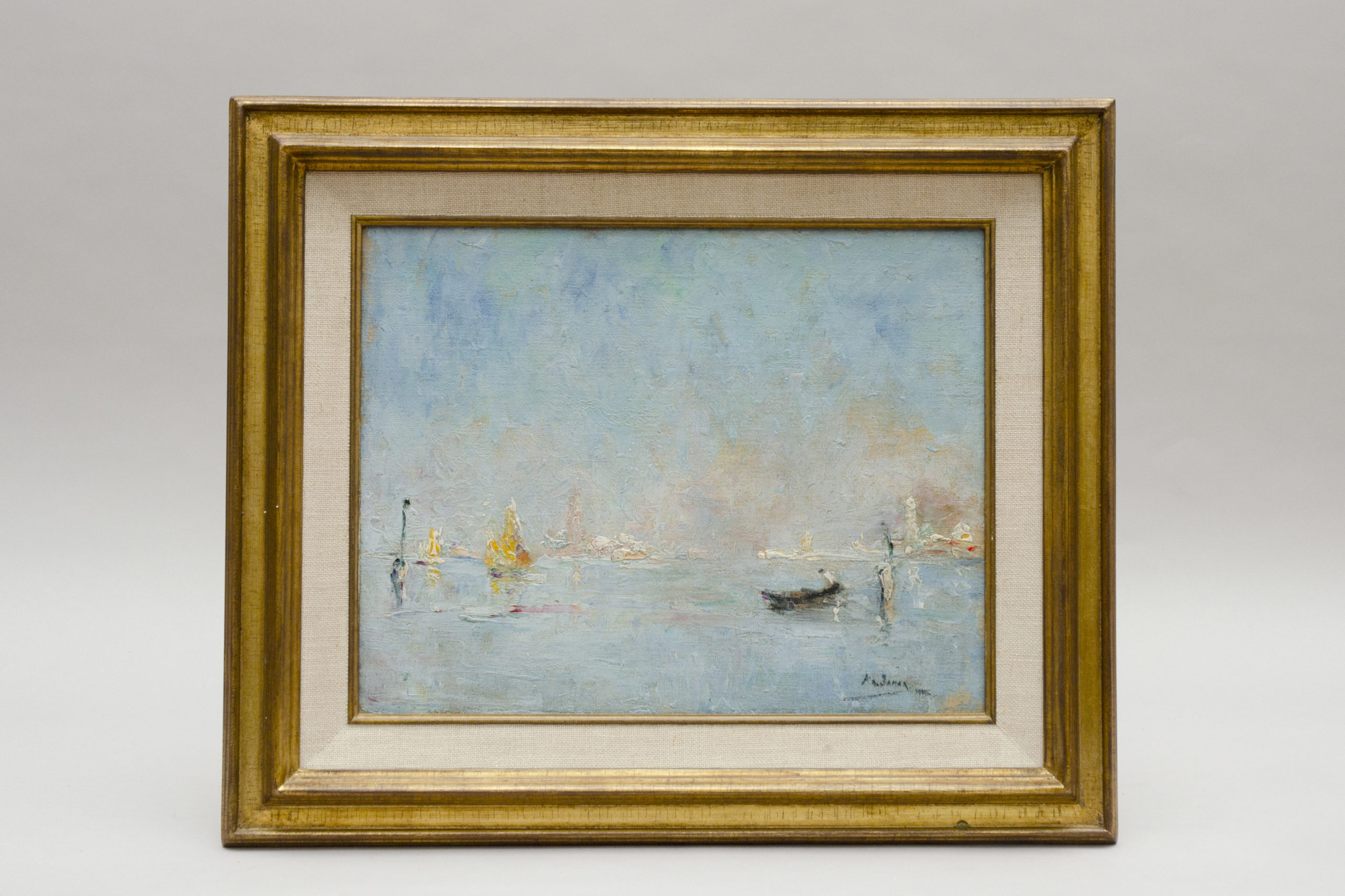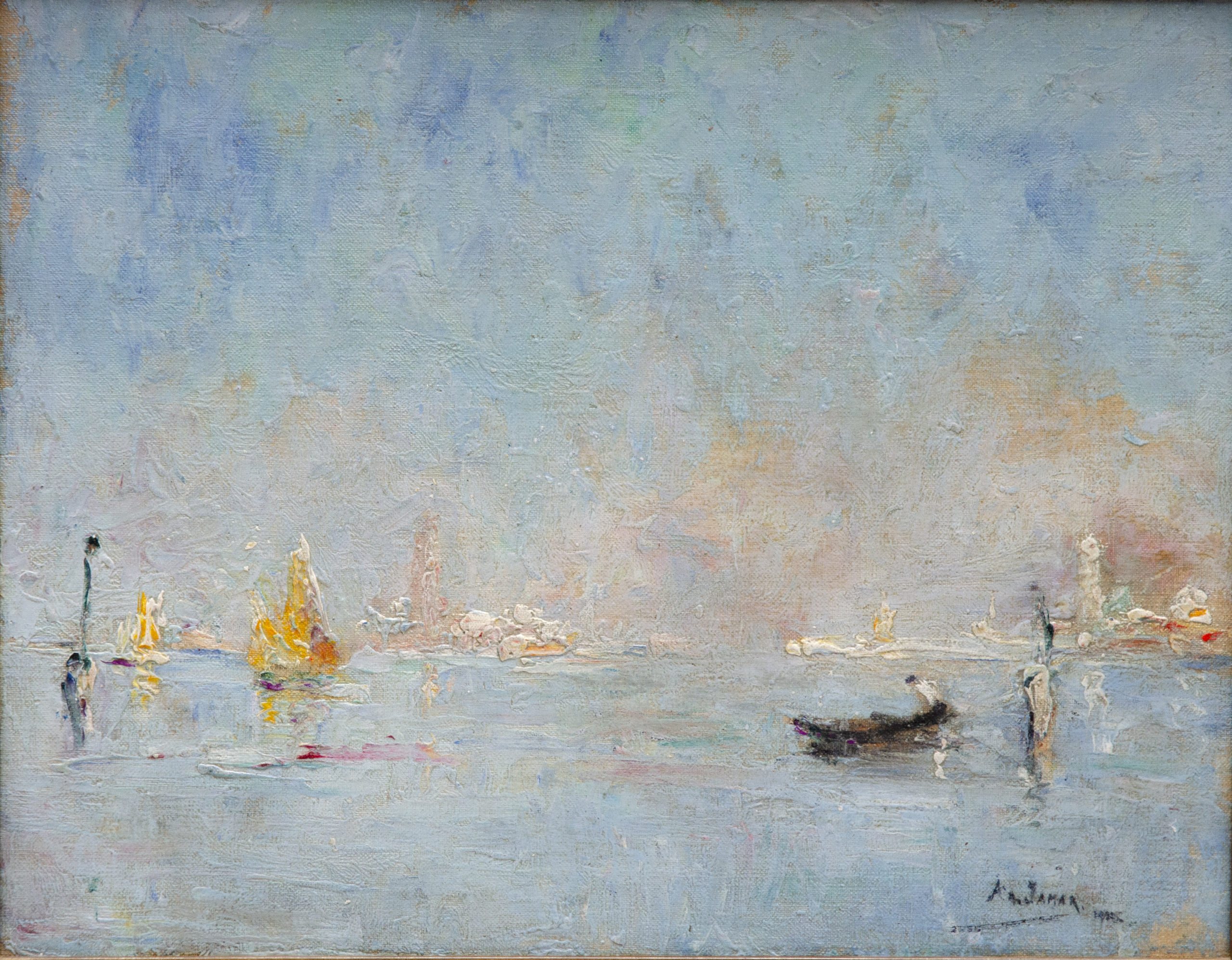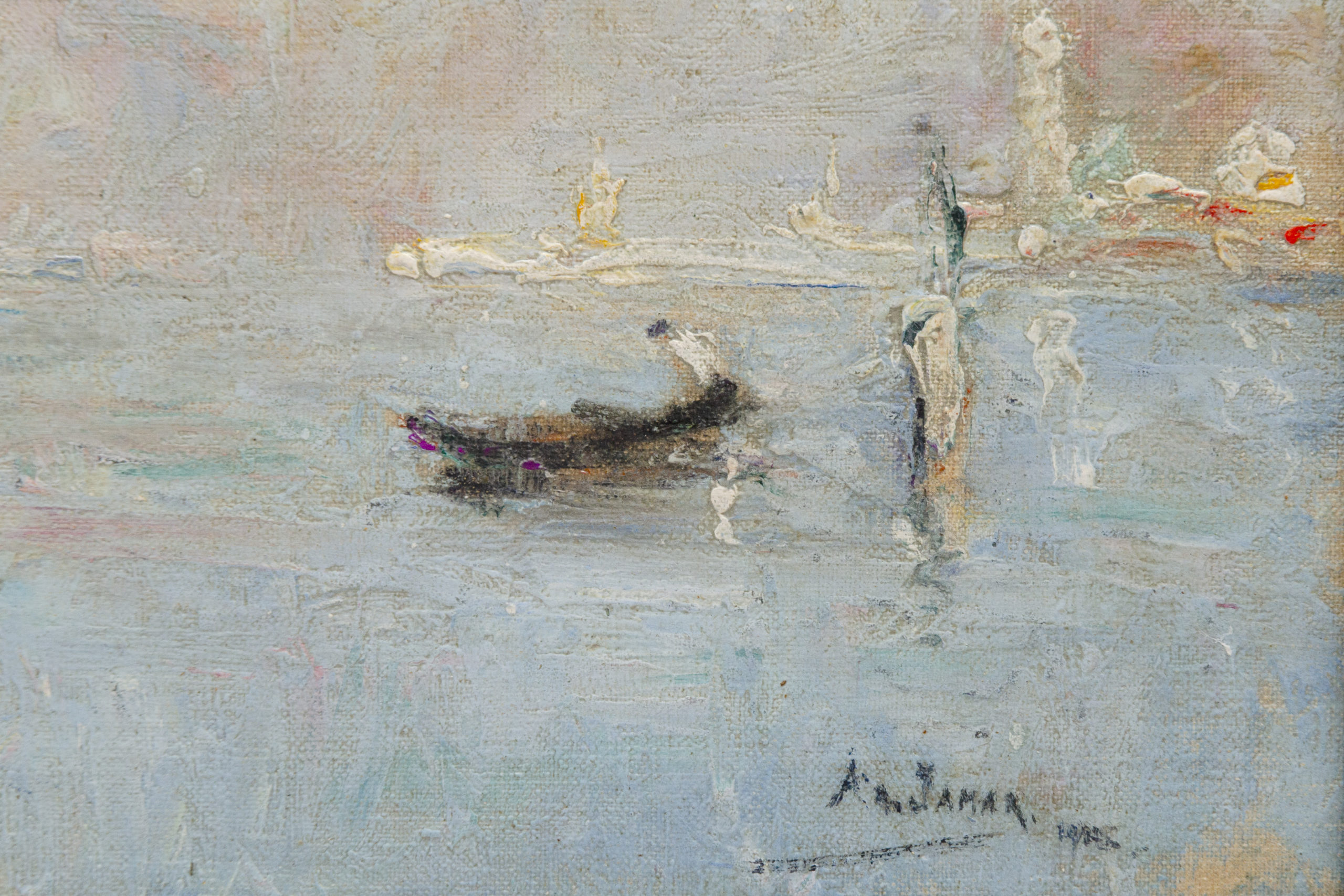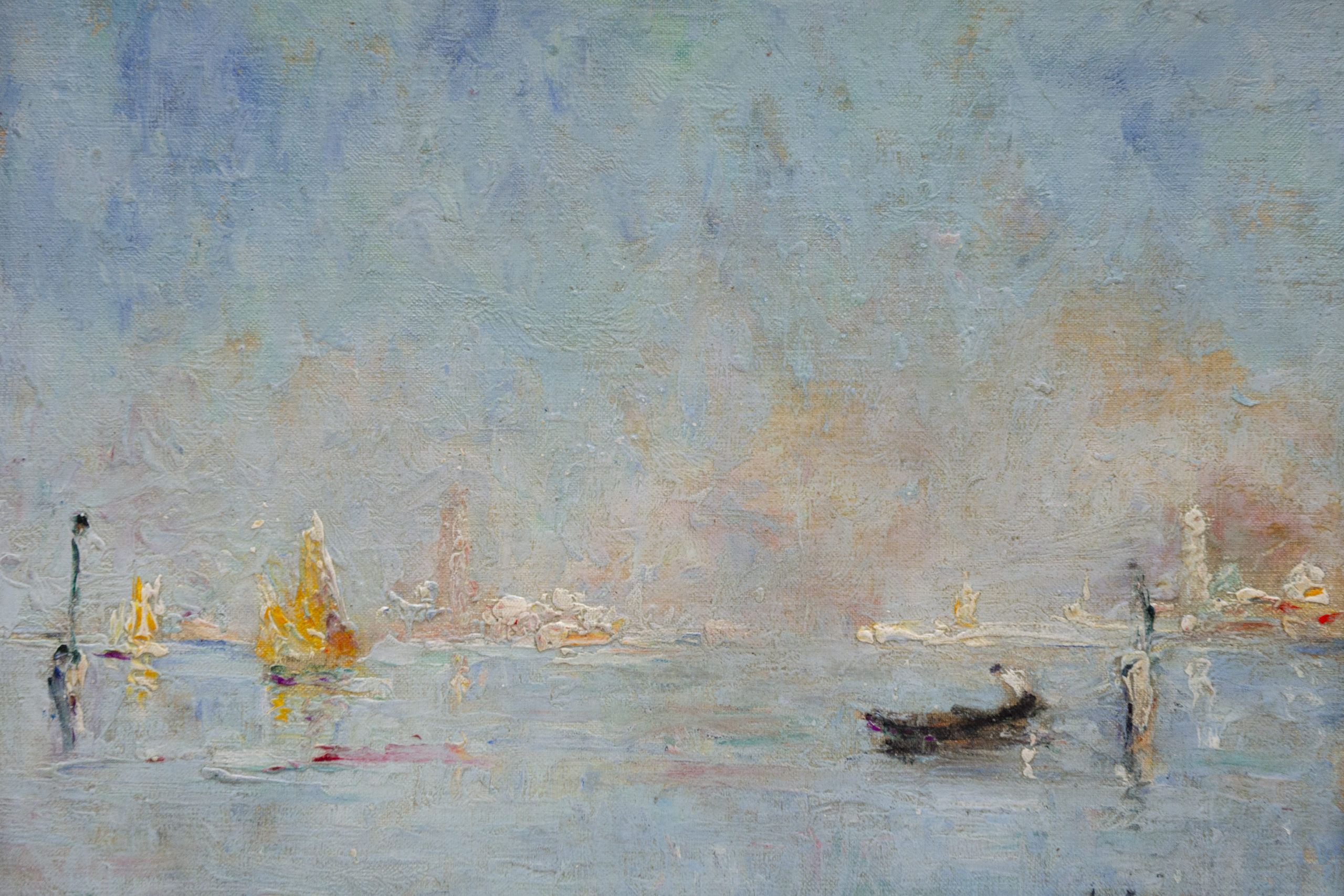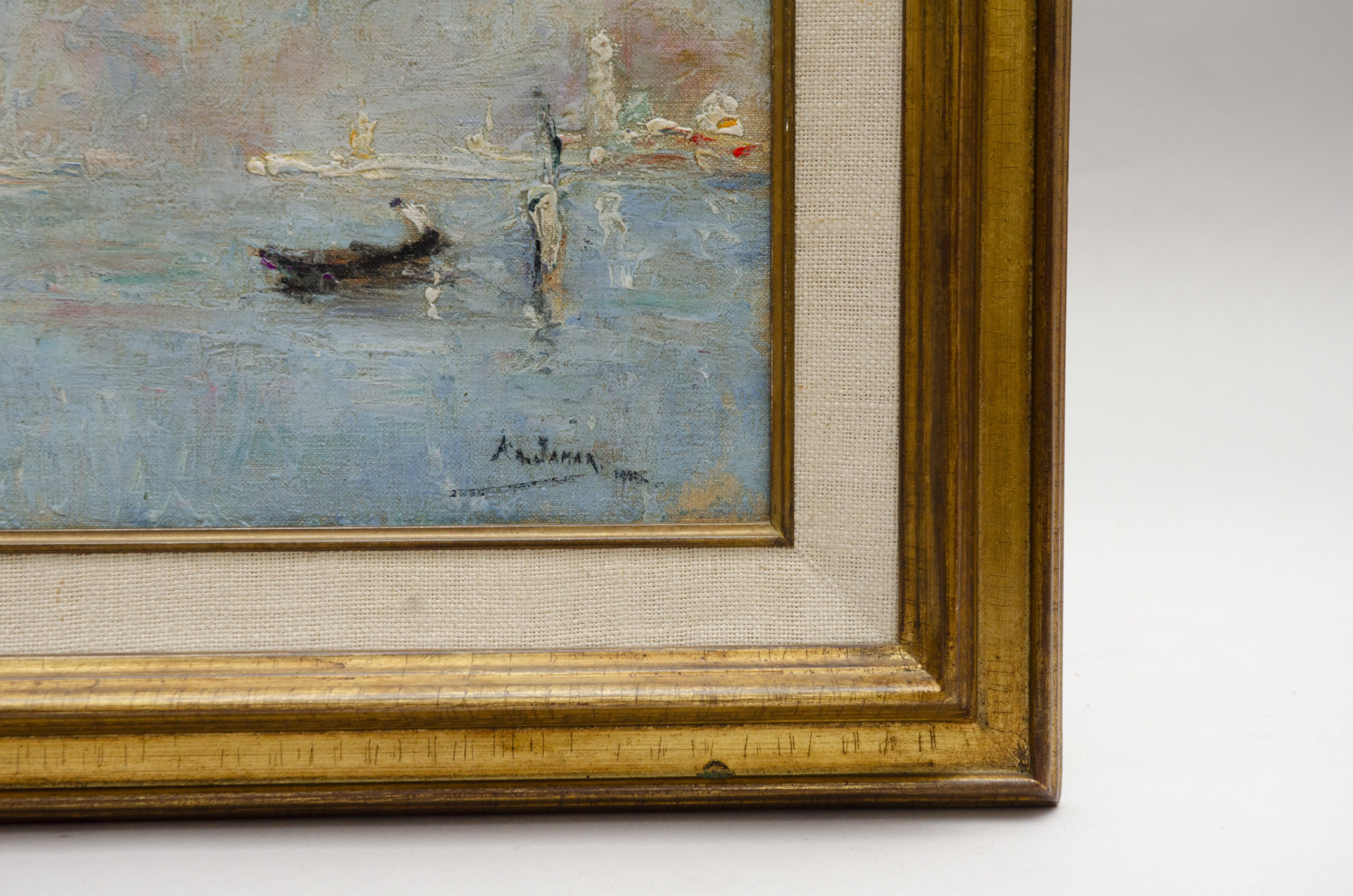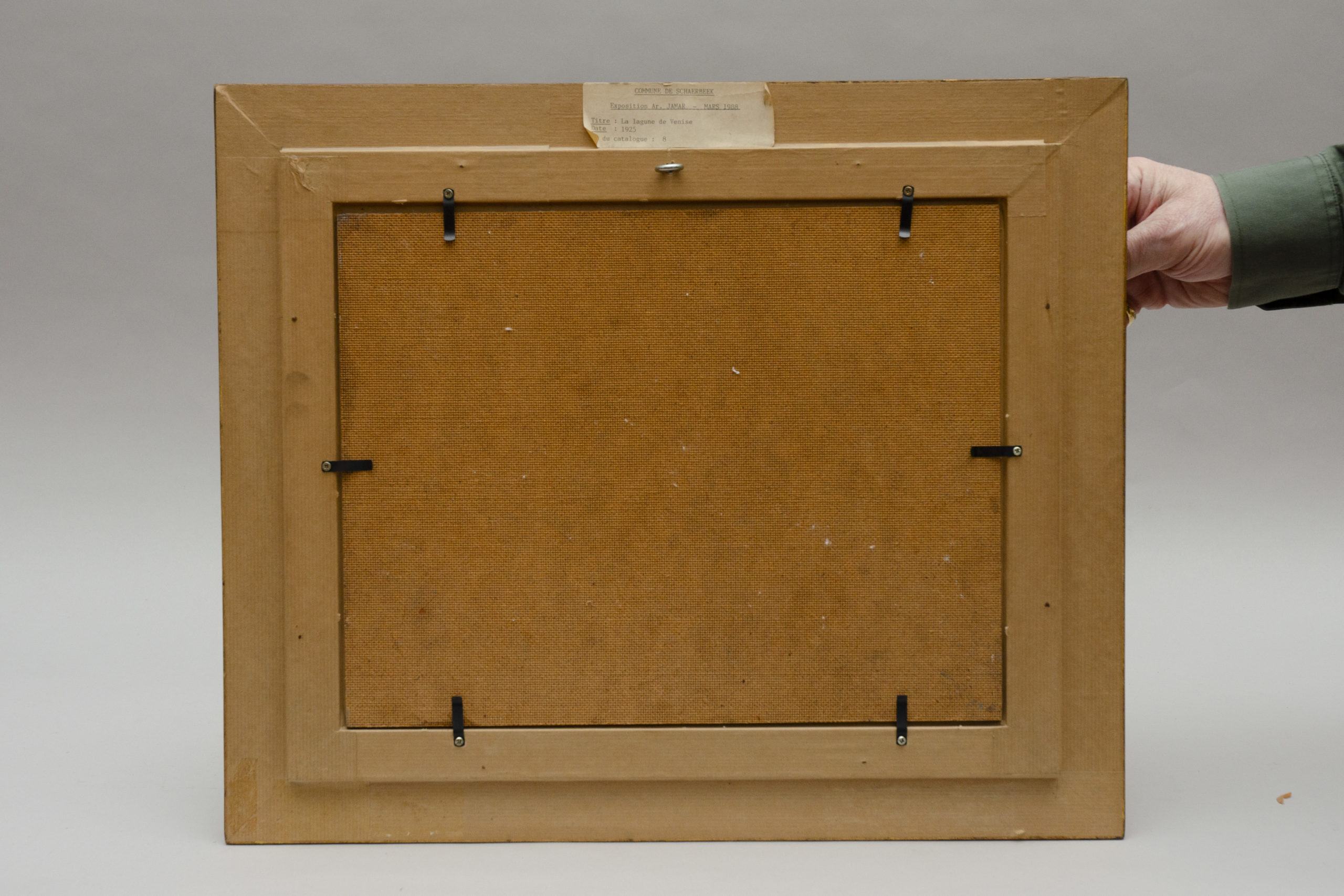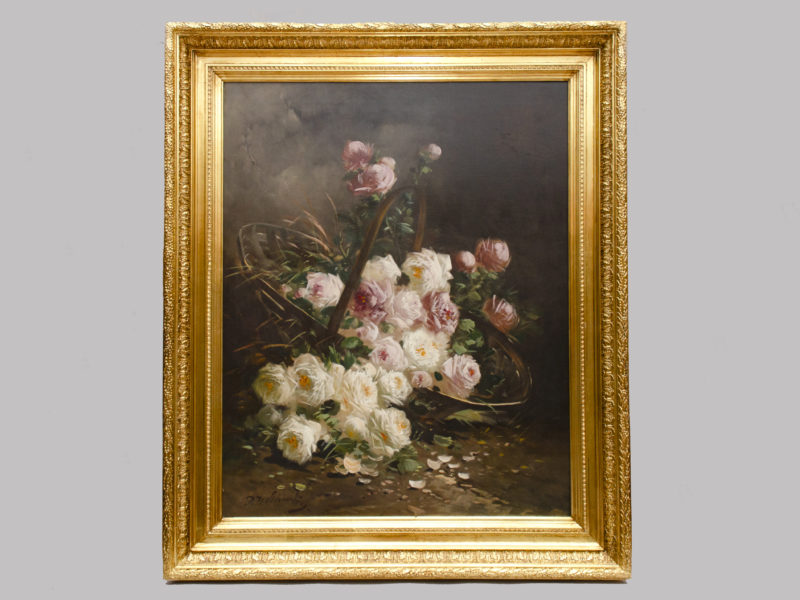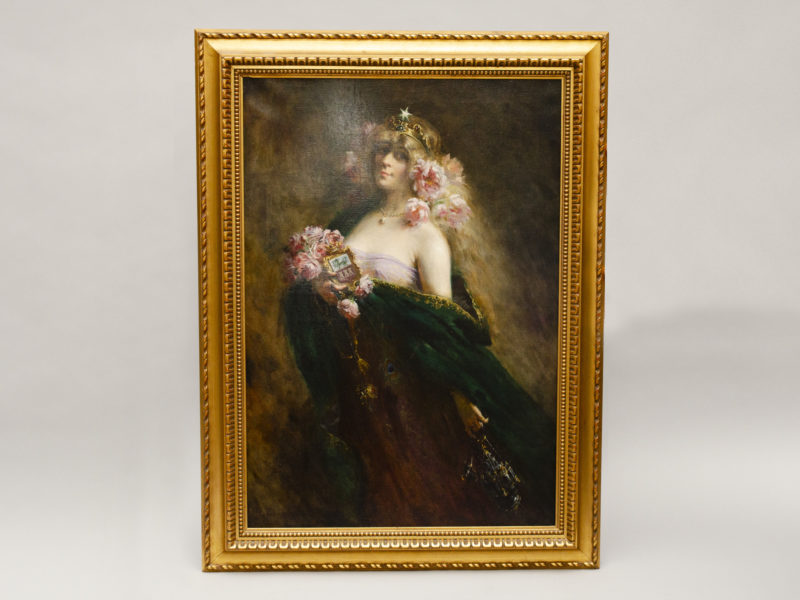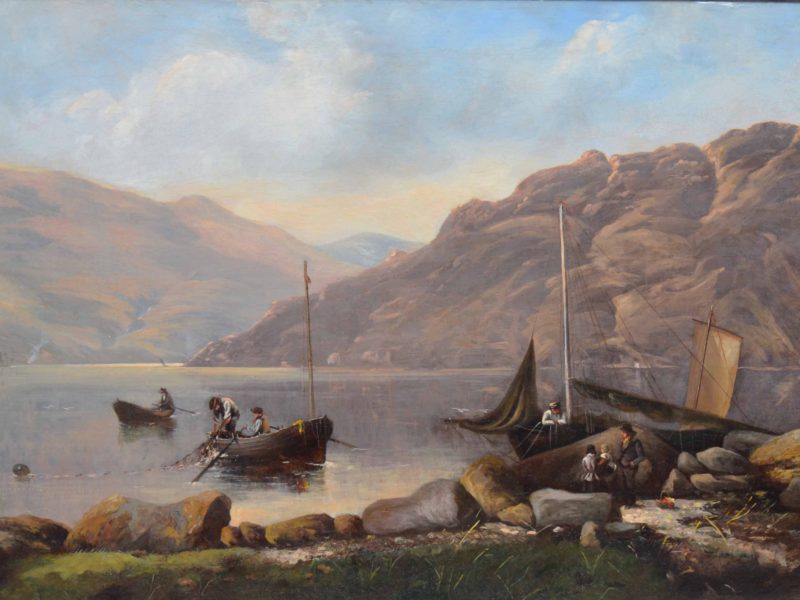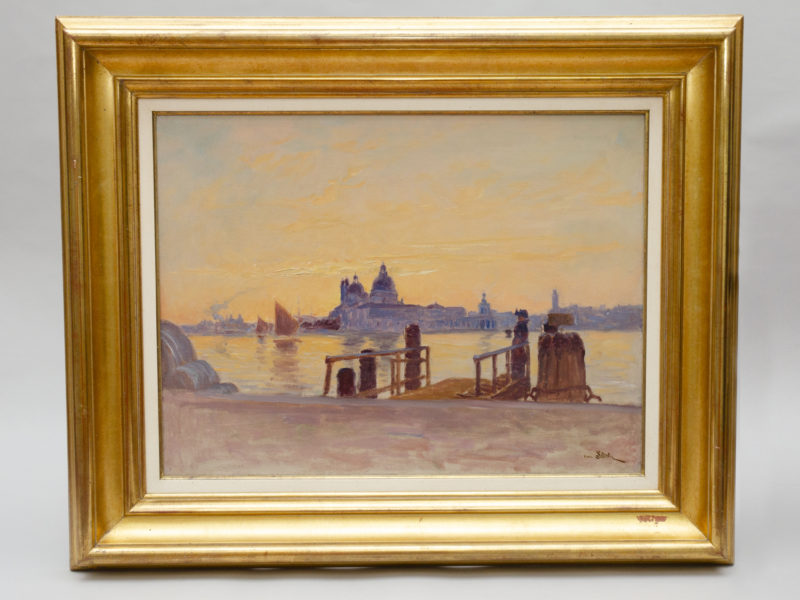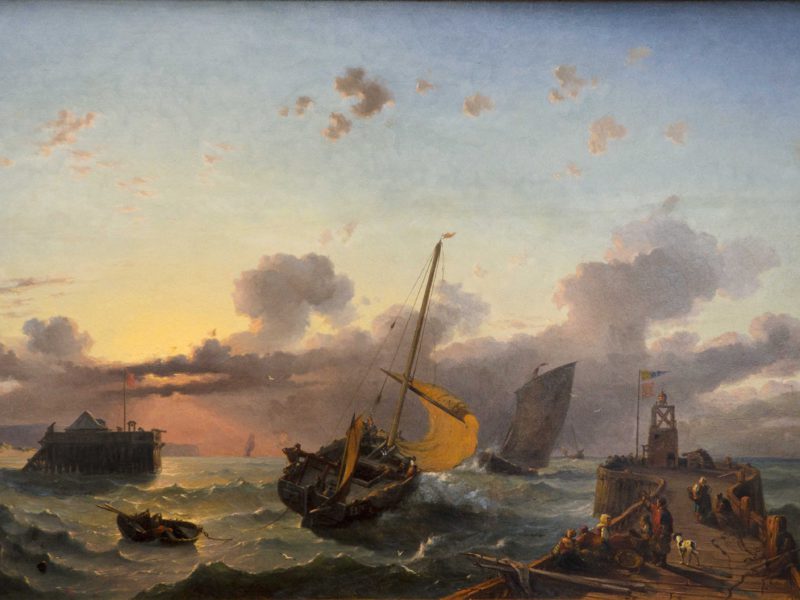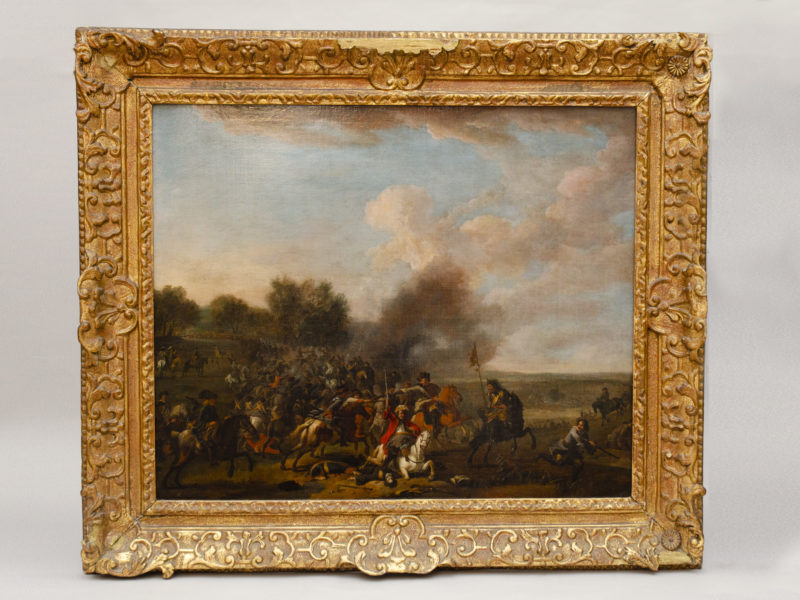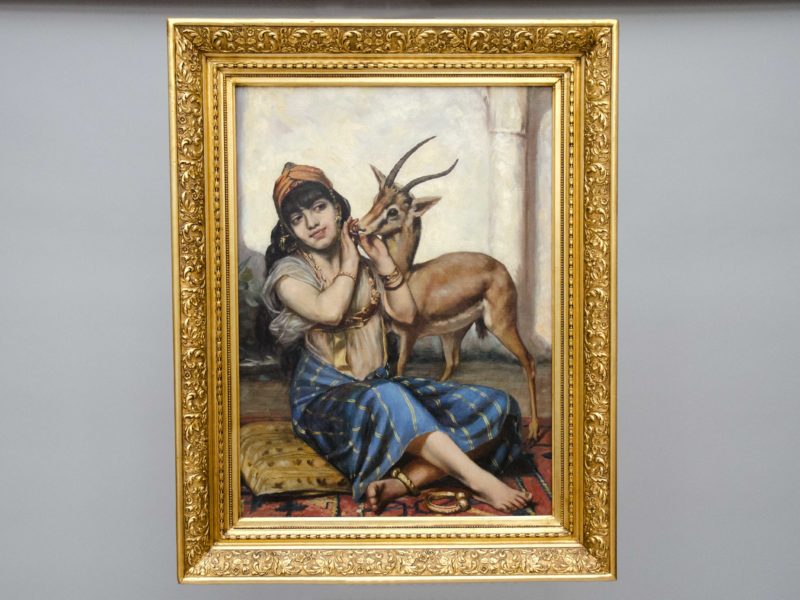“Venice”, JAMAR Armand (Liège 1870 – Brussels 1946)
Out of stock
Beautiful impressionist view of the lagoon of Venice. A gondola and some colorful sails on the water with the skyline of the city bathed in light in the back. Oil on canvas pasted on board. Signed and dated lower right. An exhibition label on the back.
Size: H 28 x W 36 cm – H 50 cm x W 43 cm
Belgian school dated 1925.
This painting was part of the retrospective exhibition in Schaerbeek in 1988.
Lit: Armand Gustave Gérard Jamar, born in 1870 in Liège and died in 1946 in Saint-Gilles, was a Belgian painter. After graduating in law, he enrolled at the Académie royale des beaux-arts in Liège in 1894, where he studied under Évariste Carpentier and Adrien De Witte. In 1900, Armand Jamar had his first exhibition in Liège and, in 1904, he moved to Schaerbeek where he occupied Constantin Meunier’s former studio. He also exhibited regularly at the Salon des artistes français, where he received an honourable mention in 1904 and the gold medal in 1907. He also took part in the Brussels (1910), Antwerp and Ghent Salons. In 1921, he held a solo exhibition in Brussels at the Cercle Artistique et Littéraire. He travelled extensively in Europe, North Africa and the United States. Like many of Évariste’s pupils, Armand Jamar was sent to the Limburg Kempen near Genk on his advice. He was also fascinated by the North Sea coasts, particularly Zeebrugge, Brittany and Zeeland. In 1921, Armand Jamar was made a Knight of the Order of Leopold. Armand Jamar began in an impressionist manner, using bright colours and broad brushstrokes to paint cityscapes, interior scenes and seascapes. Many of these paintings were done on location. His early work was influenced by the paintings of pre-impressionists such as Eugène Boudin and Johan Barthold Jongkind. He also created a number of paintings depicting market scenes and factory life. From 1920 onwards, he let the light, especially that of the sun-drenched countries where he travelled such as Spain, Italy and Algeria, burst forth more violently in pure, vivid tones. Shapes and colours became more intense, worked with brushes and knives in a style that the painter wanted to be lively, both supple and strong.
Out of stock
Contact us